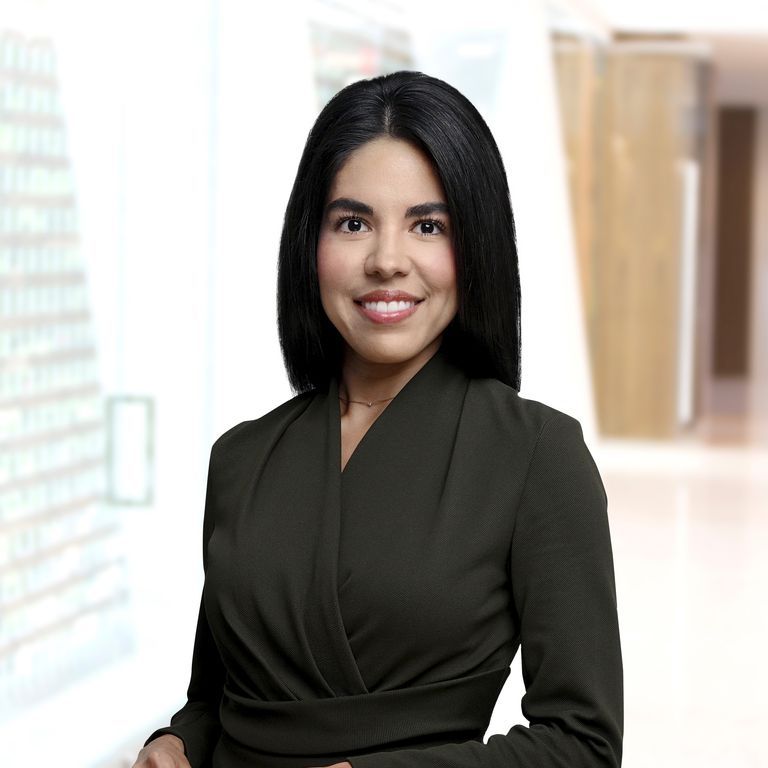Overview
You are representing a client in a complex commercial litigation matter, and trial has begun. The jury has been selected, and opening statements are done. At this point, the jurors have a general sense of what the case is about, what witnesses they'll hear from, and what the evidence may show, but they've only heard from the judge and the lawyers. All that is about to change, however, when the judge instructs you to call your first witness, and your client takes the stand for direct examination.
Trial lawyers often like to say they tell stories for a living—and that's not wrong. But statements from the lawyers are not evidence. Lawyers must tell their clients' stories—and navigate through potentially hundreds of exhibits—through their witnesses. For this reason, direct examinations of your client's witnesses are, in our view, the most important part of a trial. Good direct examinations educate the jury about your client, describe key events, and identify enough evidence so that the jury rules in your client's favor. Great direct examinations do all these things, but they also emphasize (and reiterate) your theme, explain why certain events and certain pieces of evidence matter, earn the jury's trust, and head off challenging cross-examination questions—all while telling a story that is organized and coherent.
Trial practice, including direct examinations, is an art that takes years of experience to master. Different lawyers have different questioning styles, and what works for one witness may not work for another. Nevertheless, by employing the "do's" (and avoiding the "don'ts") below, we believe all trial lawyers can successfully conduct direct examinations of their witnesses.
Do: Plot out the entire story you need to tell. Seriously, the entire story.
Witnesses tell the story, but effective trial lawyers ensure their witnesses tell a story that is organized and addresses all the evidentiary points needed to prevail. The benefits of telling an organized story are obvious, but too often, pretrial tasks become overwhelming, the trial team begins to triage, and no meaningful time is set aside to plot out the entire story. This is a mistake.
Before preparing any witness for direct examination, the trial team should sit down together and chart out the entire story the witnesses need to tell to satisfy the elements of all causes of action and/or affirmative defenses. The trial team should identify all key events, all pieces of necessary documentary evidence, and which witness(es) are most knowledgeable to talk about these key events and documents. The trial team should also decide in what order to tell the story; for example, although telling the story chronologically makes sense, starting with your client's injury and then jumping back to the beginning of the story may be more impactful to the jury. Once your trial team fully understands the complete story it needs to tell and all the specific evidence it needs to present, you can start breaking that story down into the component parts, that is, the parts of the story each witness will tell and the order in which your witnesses will be called to tell that story.
Don't: Assume the jury will piece together your client's version of events and the evidence you present if you don't tell an organized story.
By the time a case finally gets to trial, the trial team typically has been working up the case for years. They know the witnesses, they know the facts, and they know the documents. More importantly, they know the nuances, how certain pieces of evidence work together, and even how a seemingly unimportant sentence at the end of an email actually makes a huge difference.
It is a mistake to assume that the jury will pick up on these complexities—complexities that may have taken the trial team months or years to understand—without putting thought into how these complexities will be presented to the jury through the witness testimony. Indeed, trial lawyers are often surprised to learn the jury failed to appreciate a point the lawyers thought was delivered so clearly.
Put in the time on the front end to plot out the entire story you need to tell and the individual pieces of evidence you need to cover, and you’ll set yourself and your witnesses up to tell a coherent and organized story.
Do: Spend some time personalizing your witnesses.
The more credible and trustworthy your witnesses appear to the jury, the more likely the jury will believe their testimony and remember it once deliberations begin. For this reason, you should spend some time during your direct examination personalizing your witnesses. Questions about a witness’s family, occupation, educational background, where they grew up, and even their hobbies can humanize the witness for the jury (and can help steady the nerves of anxious witnesses). It is crucial to help the jury understand why they should trust your witness and how your witness factors into the overall story.
Don't: "Over-personalize" your witnesses.
Although personalizing your witness is critical, don't overdo it. You don’t need to go over every award your witness has ever won or every charity they participate in. Juries are smart, and they can sniff out pandering immediately.
Do: Make your witness the star of the show.
This is not to say lawyers should exert no control over their witnesses (a point we raise in the next "do"). To the contrary, effective lawyers guide their witness through their testimony, but they allow the witness to shine while telling the story. Statements and questions like, "Please explain that to the jury," "Tell the jury how you felt when you received Exhibit A," or "Can you tell the jury why you did that?" allow the witness to tell his or her story, thereby putting the focus on the witness and away from the lawyer.
Do: Guide your witnesses through their testimony with topic sentences.
Your witness must be the star of the show, but as we discussed above, they also need to tell an organized and coherent story. Great direct examinations may sound like a conversation, but they aren’t the same thing as having a conversation. Effective trial lawyers guide their witnesses every step of the way through their testimony, without sounding like they are putting words into their witness’s mouth—and without asking leading questions, which will surely draw an objection and pull the focus away from the witness.
Topic sentences are an effective way to guide your witness through their testimony without drawing a leading objection. Specifically, before a new topic or new line of questioning, you should announce the topic. For example, you might say, "I am going to ask you some questions about the contract that Company A entered into with Company B," or "I'm now going to ask you about the events that took place on January 27, 2025." By announcing the topic of the questions that follow, you help keep your witness on track, while also clearly articulating to the jury where you are in the overall story. Stories that are easy to follow are much easier to remember in the deliberation room.
Don't: Shy away from the weaknesses in your witness’s testimony.
Even the strongest witnesses have weaknesses, and they will come out at trial. Rather than waiting for your opposing counsel to expose the weaknesses in your witness's story on cross, address them head on, while presenting them in the most favorable light that you can. If, for example, the case turns on something your client failed to do, use direct examination to minimize that task and/or offer a reasonable explanation as to why the task wasn't done. Ultimately, you want to minimize the "a ha!" and "gotcha" moments during cross-examination by fronting them during direct.
Do: Practice, practice, practice with your witnesses. And then practice some more.
Lawyers must ensure their witnesses understand the story they need to tell, the evidence they need to testify about, and the impression they need to leave with the jury. And then, lawyers must work with their witnesses to actually tell that story in response to non-leading questions and other prompts from the lawyer. Unfortunately, there are no shortcuts here. There simply is no substitute for hard work. Coordinate with your witnesses early and get multiple practice sessions on their calendar before and during trial.
Don't: Underestimate the power of a good redirect (but also don't feel like you must redirect every witness).
Redirects present a great opportunity to parry any cross-examination points in a pithy, persuasive way (while staying within the scope of cross to avoid re-cross) or, if necessary, rehabilitate a witness if things didn't go well on cross. In the latter situation, it will be necessary to weigh the benefits of a lengthy redirect against the danger of digging an even deeper hole.
When determining whether to call a witness on redirect, trial lawyers should ask themselves the following questions, "Did my witness contradict themselves on cross?" "Did my witness confuse an issue that was clear on direct?" If the answer is yes—and the confusion undercuts the evidence needed to support a cause of action or affirmative defense—then consider recalling the witness and asking a few questions to clarify just those points that need to be clarified. If, however, the witness fumbled through cross but didn’t otherwise muddy the evidence needed for your case, consider foregoing redirect.
Consider: Hiring consultants to work with witnesses on their overall presentation (e.g., speaking style, body language).
Hiring consultants isn't a hard and fast "do," so instead we suggest that you consider this option for your witnesses on a case-by-case basis. Juries don't just listen to a witness's testimony; they observe their body language and the way in which they react and interact both with their counsel and opposing counsel. A witness who is forthcoming on direct but evasive on cross can undercut even the strongest of direct examinations and lose the jury’s trust. The non-verbal aspects of a witness’s testimony are equally as important as the oral ones.
Even if you haven't yet been to trial, you've likely prepared a witness for deposition (or at least observed a witness sitting for a deposition) and thought (diplomatically, of course), "hmm, this person might benefit from some social coaching." If you find yourself in this position, you might consider hiring consultants to work with your witnesses on their overall presentation, including speaking style, body language, and general demeanor in court.
Conclusion
Although trial lawyers don't always like to admit it, witnesses are (and rightfully should be) the stars of the show. And although each lawyer will have his or her own questioning style, every witness will come with his or her own quirks, and every case will present unique facts, organization and preparation are critical. Taking the time to plot out a complete and coherent story, identify the testimony and evidence each witness must speak to, and practice having the witness tell that story in response to non-leading questions and other prompts are the key aspects of any effective direct examination.


